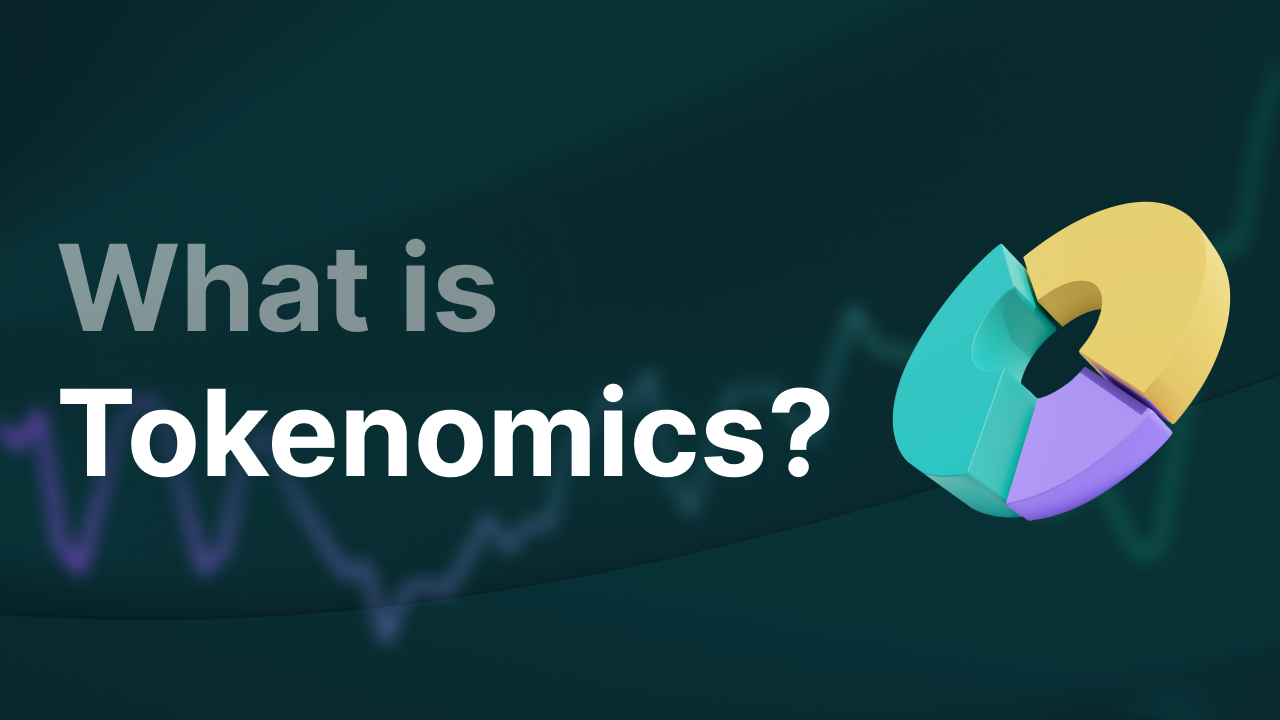¿Qué es la tokenomics y por qué es importante?

¿Qué es la tokenomics?
La tokenomics es el modelo económico detrás de una criptomoneda o una blockchain. Incluye aspectos como el suministro total, el suministro máximo, el suministro en circulación, la distribución de tokens, incentivos para la participación y casos de uso. En resumen, la tokenomics es el diseño económico de un token o moneda que define su valor, comportamiento y sostenibilidad dentro de un sistema descentralizado.
La palabra en sí viene de “token” y “economics” (economía), en referencia al modelo económico detrás de un proyecto blockchain.
Al igual que la economía tradicional, las criptomonedas también se basan en la oferta y la demanda. La tokenomics analiza la oferta y la demanda de tokens digitales (cripto) y cómo estos elementos trabajan juntos para crear valor para usuarios, desarrolladores e inversores.
Puntos clave
- La tokenomics es el modelo económico detrás de un proyecto cripto o de blockchain.
- Incluye aspectos como suministro, distribución, utilidad, incentivos y gobernanza.
- Una tokenomics bien diseñada impulsa el uso, el valor y la sostenibilidad.
- Ayuda a los usuarios a entender mejor y evaluar proyectos cripto.
Elementos clave de la tokenomics
Suministro y distribución
Uno de los aspectos más importantes de la tokenomics es el suministro del token. Hay dos tipos principales que considerar:
- Suministro máximo: La cantidad total de tokens que existirán. Por ejemplo, Bitcoin (BTC) tiene un suministro limitado de 21 millones.
- Suministro en circulación: La cantidad de tokens actualmente disponibles y en el mercado.
La forma en que se distribuyen los tokens —ya sea mediante una ICO, un airdrop o minería— tiene un gran impacto en el precio y valor del token.
La tokenomics también proporciona información sobre cómo se distribuyen los tokens entre los interesados. ¿Qué porcentaje va para el equipo o los desarrolladores? ¿Hay una parte reservada para marketing? ¿Cuántos tokens se vendieron en la ICO y cuántos quedan? Esta distribución es esencial para evaluar la sostenibilidad y equidad de un proyecto.
Utilidad
La utilidad de un token se refiere a su propósito dentro del ecosistema blockchain. Algunos se usan solo para transacciones, mientras que otros cumplen funciones específicas, como permitir votar en la gobernanza (tokens de gobernanza) o pagar comisiones de red.
Un modelo de tokenomics bien diseñado asegura que el token tenga utilidad real en el ecosistema, lo que impulsa la demanda y ayuda a mantener su valor a largo plazo.
Incentivos
Para que una criptomoneda tenga éxito, debe haber incentivos para todos los participantes de la red: usuarios, mineros, validadores y desarrolladores. La tokenomics define cómo son recompensados. Por ejemplo, en sistemas de proof-of-work como Bitcoin, los mineros reciben nuevas monedas por validar transacciones. En sistemas de proof-of-stake, los validadores son recompensados por hacer staking con sus activos y mantener segura la red.
Modelos deflacionarios vs inflacionarios
La tokenomics también define si una criptomoneda sigue un modelo deflacionario o inflacionario.
- Tokens deflacionarios: Tienen un suministro fijo o reducen el suministro en circulación con mecanismos como el burning (quema de tokens). Esto crea escasez y, en teoría, aumenta el valor con el tiempo.
- Tokens inflacionarios: Aumentan su suministro con el tiempo a través de recompensas por bloque o intereses. Aunque los modelos inflacionarios pueden incentivar la participación, también pueden devaluar el token si la oferta crece más rápido que la demanda.
Gobernanza y toma de decisiones
La gobernanza es un aspecto cada vez más importante en la tokenomics. Muchos proyectos descentralizados permiten a los holders votar sobre decisiones clave, como actualizaciones del protocolo o cambios en la política monetaria. Un buen modelo de gobernanza permite que la comunidad participe en la evolución del proyecto, lo que mejora el compromiso y la estabilidad a largo plazo.
¿Por qué es importante la tokenomics?
Entender la tokenomics es esencial para cualquier persona que quiera invertir o utilizar criptomonedas. En Europa, donde la adopción está creciendo y la regulación se está desarrollando, conocer los fundamentos de la tokenomics te ayudará a moverte por este entorno en constante cambio. He aquí por qué:
- Inversiones informadas: La tokenomics permite evaluar la sostenibilidad a largo plazo de un proyecto. Los tokens con oferta limitada y utilidad clara tienden a mantener su valor mejor que los inflacionarios sin un propósito definido.
- Evitar estafas: No todos los proyectos cripto tienen buenas intenciones. Algunos tienen una mala tokenomics que permite esquemas de pump-and-dump donde solo ganan los primeros inversores. Conocer la tokenomics te ayuda a detectar estas señales de alerta.
- Participar en el ecosistema: La tokenomics te muestra cómo puedes aportar valor o beneficiarte de una red blockchain, ya sea haciendo staking o participando en la gobernanza. También te da una visión clara sobre las recompensas y cómo funciona la economía del token.
Tokenomics y Europa: ¿Cuál es la conexión?
A medida que más ciudadanos, empresas e instituciones europeas exploran la tecnología blockchain, entender la tokenomics se vuelve crucial.
Los reguladores de la UE están prestando más atención a cómo funcionan las criptomonedas, especialmente con iniciativas como la ley Markets in Crypto-Assets (MiCA), que busca establecer un marco regulatorio uniforme. Una buena tokenomics puede ayudar a los proyectos a cumplir con esta normativa, haciéndolos más transparentes, justos y sostenibles, y más atractivos para los inversores europeos.
Además, con el enfoque europeo en la energía verde y las tecnologías sostenibles, aumenta el interés en modelos de tokenomics que promuevan la eficiencia energética o premien el uso de energías renovables mediante recompensas de staking.
Reflexión final
La tokenomics es la columna vertebral de todo proyecto cripto o blockchain. Define cómo se crean, distribuyen y utilizan los tokens dentro de un ecosistema descentralizado. Para inversores, desarrolladores y entusiastas, comprender la tokenomics es clave para tomar decisiones inteligentes en un espacio que evoluciona rápido.
A medida que crece la adopción de criptomonedas, tener un conocimiento profundo de la tokenomics te ayudará a invertir con más inteligencia.
